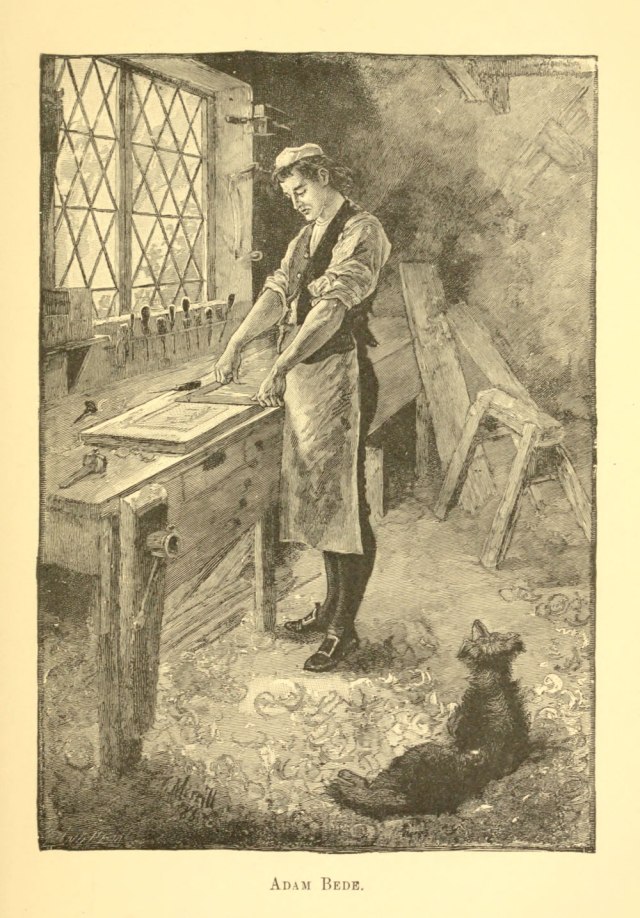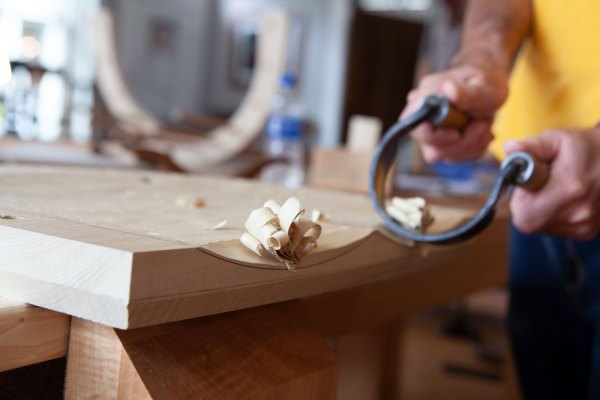Boarded Bookshelf –
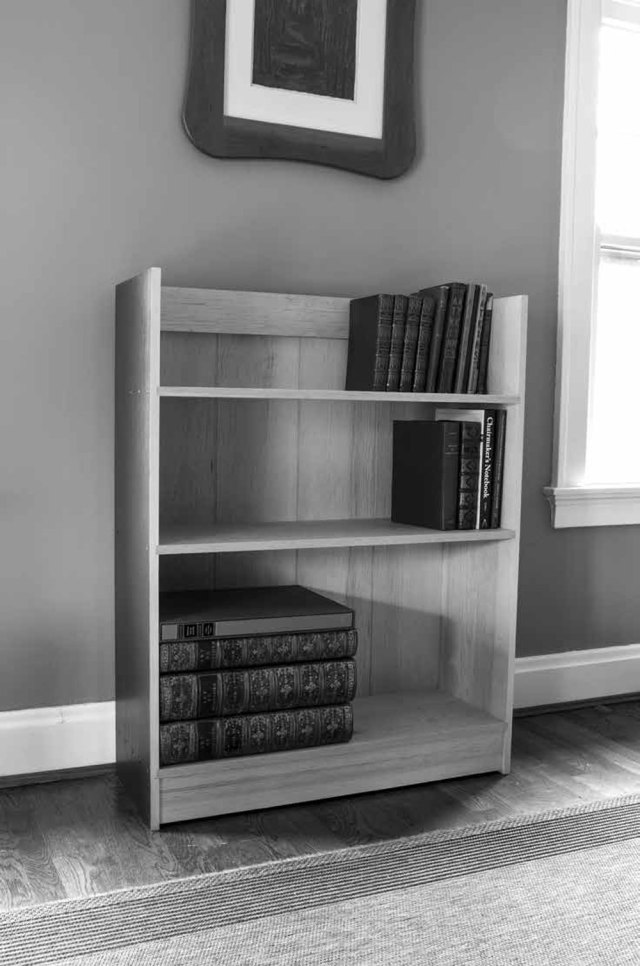
This is an excerpt from “The Anarchist’s Design Book” by Christopher Schwarz.
Trying to improve a simple set of bookshelves might seem ridiculous. But I think there are significant things to say about the warped state of bookshelf construction in the modern age.
What could be wrong about horizontal surfaces fastened to vertical ones? Plenty.
For starters, I’m not a fan of adjustable shelving. I think that if you gave enough monkeys enough mescaline, you might be able to come up with a plastic jig to drill the right number of holes for adjustable shelf pins that weren’t a waste of time or space. But that’s a lot of mescaline. Adjustable shelving is, in my opinion, mostly a cop-out.
Books come in fairly standard sizes. Heck, they once came in sizes that were based simply on how many times you folded a large sheet of paper. But thanks to the miracle and wastefulness of modern book manufacturing, we now have some bizarre sizes to deal with.
These odd books are at the extreme ends of a bell curve of book shapes (called “form factors” or “formats” in the design world). You can find books out there that are 18″ wide and 10″ high (yup, a book on billboards). But if you are someone who reads woodworking books, novels and non-fiction (and not art books on Estonian midget nudist wrestlers), then trying to accommodate whack-doodle form factors isn’t necessary.
So I’ve always viewed adjustable shelving with great suspicion. Do we need to adjust every shelf in a carcase 1″ up or down? I don’t.
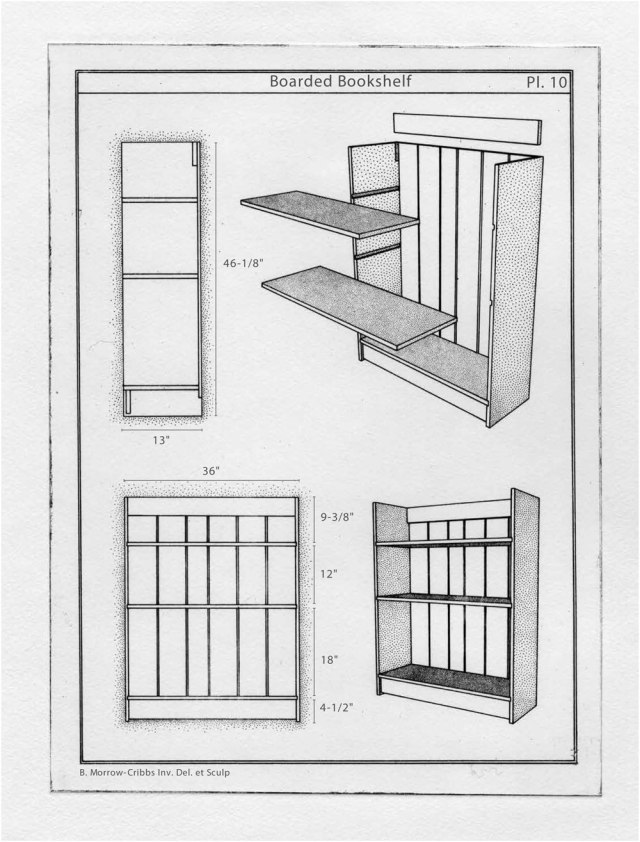
What Sizes are Important?
Go to any bookstore and you’ll find that most books come in roughly three sizes: small, medium and large.
Small books are 6″ x 9″ or smaller – these are the novels and standard woodworking books of the 19th and 20th centuries. It’s a convenient size for reading in the subway or the park. And they fit easily into a knapsack or shoulder bag.
The medium size is about 8-1/2″ x 11″ (slightly more if it’s a hardback). This became a fairly standard size for how-to books in the latter 20th century and is economical to print. So you will encounter a lot of these books as you build your library. I find them to be a stepchild size. They are too big to travel with easily. Yet when I am reading them at home I always wish they were bigger.
The large size of book is 11″ x 17″ or some close variant. These books are uncommon in the modern age, unless you are into art books or old books. But when I find them they are worth the extra expense.
Many excellent old books on woodworking, including the 18th-century pattern books, were oversized folios. So I think it’s worth making a place for them in a bookshelf. It might be wishful thinking, but so what?
So this bookshelf has shelf openings of three sizes: 18″ high for big books, 12″ for the medium books and 9-3/8″ for the small ones. (However, the top shelf has no top, so you can fit taller books up there if you dare.)
Other Advantages of this Form
So now that you know the typical book sizes, wouldn’t it be sweet to provide just a wee bit of adjustability – up and down – for odd sizes?
No, it wouldn’t.
Fixed shelves are far stiffer than adjustable ones. You can nail a fixed shelf in place though the back of the carcase. This adds immense stiffness so the shelf won’t sag. (And if you think that sagging shelves aren’t a problem then you don’t own enough books.)
The other advantage to fixed shelves is they add to the overall soundness of the carcase. If you have only two fixed shelves – which is typical in a commercial bookcase – the carcase is more likely to rack compared to a carcase that has multiple shelves that are nailed through both the back and the bookcase’s vertical uprights.
One last thing I like about fixed shelves: They don’t ever collapse or slide off their adjustable shelf pins.
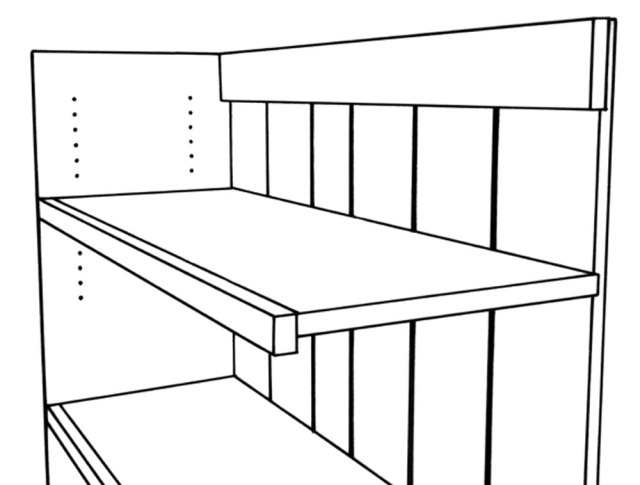
How to Cheat
So let’s say you think I’m full of crap or you pine desperately for adjustable shelves. Can you make a shelf unit that is stiff enough? Yup. Do these two things: Use a plywood back that is glued and screwed in place. That will stiffen the carcase. To make the shelves stiff, use what is called a “dropped edge” on every adjustable shelf. This is when you attach a strip of solid wood to the front and/or rear of the shelf to stiffen it.
A typical dropped edge is 1-1/4″ wide and is attached to the front of the shelf. Note that the dropped edge can also be used to hide the fact that you used plywood for the shelves. (Naughty, naughty. Plywood isn’t as stiff as solid wood – hence the name “solid” wood.)
If you look at the bookcase in this book, the “kick” (the horizontal strip affixed to the lower shelf ) works exactly like a dropped edge. There’s good reason for it to be attached to the lower shelf because it’s designed to hold the heaviest books.
— MB
